Transformer Electricity Market Insights: Trends in USA, Europe, and Middle East?
Are you struggling to keep up with the rapidly evolving transformer market across different regions? You’re not alone. The complex interplay of technological advancements, energy policies, and market dynamics can be overwhelming.
The transformer electricity market in the USA, Europe, and Middle East shows distinct trends. The USA focuses on grid modernization, Europe leads in renewable integration, and the Middle East sees rapid infrastructure growth. Each region’s unique energy landscape shapes its transformer demand, technological adoption, and regulatory environment.
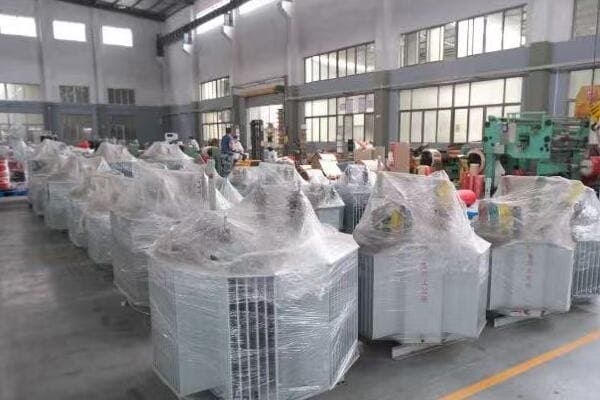
As someone who’s been in the transformer industry for over two decades, I’ve witnessed firsthand how these regional differences impact market strategies. Let’s dive into the key trends shaping the transformer markets in these regions.
Market Dynamics: Comparative Analysis of Transformer Demand in USA, Europe, and Middle East?
Are you curious about why transformer demand looks so different across these regions? The answer lies in their unique economic, technological, and regulatory landscapes.
Transformer demand varies significantly across regions. The USA market is driven by grid modernization and replacement of aging infrastructure. Europe’s demand is shaped by renewable energy integration and energy efficiency mandates. The Middle East sees high demand due to rapid urbanization and industrial growth, coupled with ambitious energy diversification plans.
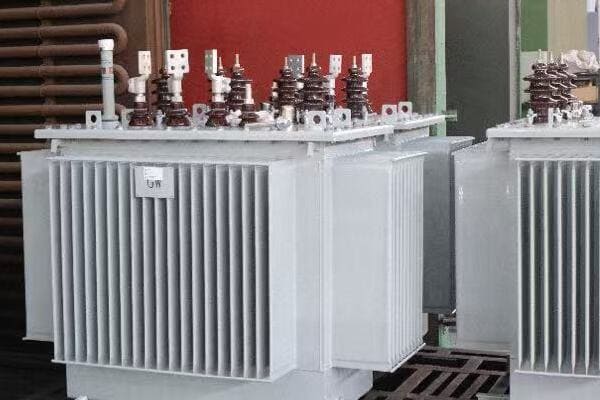
Let’s break down the key factors influencing transformer demand in each region:
USA: Modernization and Reliability Focus
The US market has unique characteristics:
-
Aging Infrastructure:
- Many transformers are nearing end-of-life
- I’ve seen utilities replace transformers that are over 40 years old
- This drives a steady demand for new, more efficient units
-
Grid Resilience:
- Focus on hardening the grid against natural disasters
- In a recent project, we installed smart transformers with advanced monitoring capabilities to improve grid resilience
-
Energy Efficiency Regulations:
- DOE efficiency standards are pushing for more efficient transformers
- I’ve helped utilities upgrade to high-efficiency units, achieving energy savings of up to 15%
Europe: Renewable Integration and Efficiency
Europe’s market is heavily influenced by environmental policies:
-
Renewable Energy Growth:
- High penetration of wind and solar power
- I’ve worked on projects where transformers needed to handle bi-directional power flow for distributed generation
-
Cross-Border Interconnections:
- Increasing demand for high-voltage transformers for international grid connections
- Recently, I was involved in a project linking offshore wind farms across three countries
-
Strict Efficiency Standards:
- EU’s Ecodesign Directive drives demand for ultra-efficient transformers
- I’ve seen manufacturers develop new core materials to meet these stringent requirements
Middle East: Rapid Growth and Diversification
The Middle East market is characterized by expansion:
-
Infrastructure Development:
- Massive investments in new power generation and distribution
- I’ve been part of projects where entire cities’ worth of transformers were installed in record time
-
Energy Diversification:
- Shift towards renewable energy, particularly solar
- In a recent Saudi project, we supplied transformers specifically designed for harsh desert conditions
-
Industrial Growth:
- Increasing demand from petrochemical and manufacturing sectors
- I’ve helped design custom transformers for oil and gas facilities with unique requirements
Comparison Table: Regional Transformer Market Characteristics
| Characteristic | USA | Europe | Middle East |
|---|---|---|---|
| Primary Demand Driver | Grid Modernization | Renewable Integration | Infrastructure Expansion |
| Key Transformer Type | Distribution Transformers | Grid Interconnection Transformers | Power Transformers for New Installations |
| Efficiency Focus | High | Very High | Moderate |
| Renewable Energy Impact | Moderate | High | Growing |
| Market Maturity | Mature | Mature | Developing |
| Regulatory Influence | Significant | Very High | Moderate |
This table summarizes the key differences I’ve observed in these markets over the years.
It’s important to note that these regional characteristics are not static. For instance, I’ve noticed the USA increasingly focusing on renewable integration, similar to Europe. In a recent California project, we had to redesign several substations to accommodate large-scale solar farms.
The Middle East’s market is evolving rapidly. While it’s still dominated by traditional power infrastructure projects, I’m seeing a growing emphasis on smart grid technologies. In a recent UAE project, we integrated advanced monitoring systems into traditional power transformers, bridging the gap between old and new technologies.
Europe’s market, while mature, continues to innovate. I’ve been particularly impressed by recent developments in phase-shifting transformers for better power flow control between countries. These specialized units are becoming crucial as Europe moves towards a more integrated energy market.
In the USA, the push for electric vehicle adoption is creating new demands on the distribution network. I’ve been involved in several projects where we had to upgrade neighborhood transformers to handle the increased load from EV charging.
The impact of energy storage on transformer demand is another emerging trend. In all three regions, I’m seeing increased interest in transformers designed to work efficiently with large-scale battery systems. This is particularly notable in areas with high renewable penetration.
Looking ahead, I expect these regional differences to continue shaping transformer markets. However, global challenges like climate change and the need for more resilient power systems may lead to some convergence in approaches. Manufacturers and buyers alike need to stay informed about these regional nuances to make strategic decisions in this dynamic market.
Technological Advancements: Regional Approaches to Innovation in Transformer Design?
Are you wondering how different regions are pushing the boundaries of transformer technology? The approaches to innovation in transformer design vary significantly between the USA, Europe, and the Middle East, reflecting their unique market needs and priorities.
Technological innovation in transformer design differs across regions. The USA focuses on smart grid compatibility and resilience. Europe leads in eco-friendly designs and efficiency. The Middle East emphasizes adaptability to harsh environments and high-capacity solutions. These regional priorities are driving distinct technological advancements in transformer design and functionality.
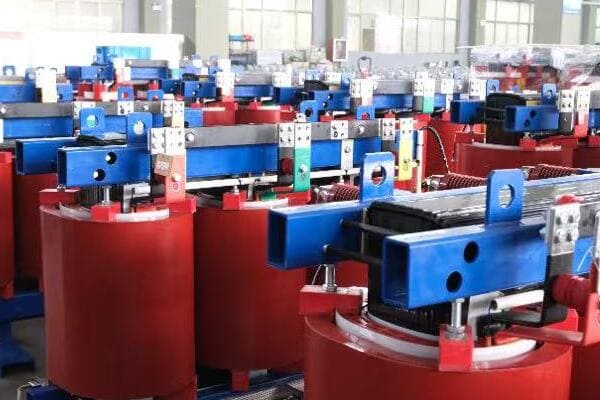
Let’s explore the key technological trends in each region:
USA: Smart Grid Integration and Resilience
American innovation focuses on grid modernization:
-
Advanced Monitoring Systems:
- Integration of IoT sensors for real-time health monitoring
- I recently worked on a project where transformers could predict failures 2-3 weeks in advance
- This predictive maintenance approach is reducing downtime and extending transformer life
-
Cybersecurity Features:
- Increasing focus on protecting transformers from cyber threats
- In a recent utility project, we implemented advanced encryption protocols in transformer communication systems
- This is becoming a standard feature in critical infrastructure projects
-
Rapid Recovery Designs:
- Transformers designed for quick replacement in case of emergencies
- I’ve been involved in developing modular designs that can be installed in hours instead of days
- This innovation is crucial for areas prone to natural disasters
Europe: Eco-Friendly and High-Efficiency Solutions
European innovation prioritizes sustainability:
-
Bio-degradable Insulating Fluids:
- Shift towards environmentally friendly alternatives to mineral oil
- I’ve seen widespread adoption of ester-based fluids, especially in sensitive environmental areas
- These fluids not only reduce environmental risk but also extend transformer life
-
Amorphous Core Technology:
- Widespread use of amorphous metals to reduce core losses
- In a recent project, we achieved a 70% reduction in no-load losses compared to traditional silicon steel cores
- This technology is becoming standard in distribution transformers across Europe
-
Compact Urban Designs:
- Innovative designs to fit transformers in space-constrained urban areas
- I worked on a project in Paris where we used specially designed slim-profile transformers
- These designs are crucial for upgrading infrastructure in densely populated cities
Middle East: Adapting to Extreme Conditions
Middle Eastern innovation addresses unique environmental challenges:
-
High-Temperature Resilient Designs:
- Transformers engineered to operate efficiently in extreme heat
- In a recent Saudi Arabian project, we developed transformers that can maintain efficiency at 55°C ambient temperature
- This innovation is crucial for reliable power supply in desert climates
-
Sand and Dust Resistance:
- Advanced sealing and filtration systems to protect against fine particulates
- I’ve been involved in designing transformers with special cooling systems that can operate in sandstorm conditions
- These designs significantly reduce maintenance needs and extend transformer life in harsh environments
-
High-Capacity Solutions:
- Focus on ultra-high voltage and high-capacity transformers
- In a recent UAE project, we installed 1000 MVA transformers to support rapid urban development
- This trend is driven by the need for efficient power transmission over long distances in the region
Comparison Table: Regional Technological Innovations
| Innovation Area | USA | Europe | Middle East |
|---|---|---|---|
| Primary Focus | Smart Grid & Resilience | Eco-Friendly & Efficiency | Environmental Adaptation |
| Key Technology | IoT Integration | Amorphous Cores | Heat-Resistant Materials |
| Efficiency Improvement | Moderate | Very High | High |
| Environmental Impact | Moderate | Very Low | Moderate |
| Size and Form Factor | Standard | Compact | Large Capacity |
| Unique Feature | Cybersecurity | Biodegradable Fluids | Dust Resistance |
This table summarizes the key technological trends I’ve observed in these regions.
It’s fascinating to see how regional needs drive innovation. In the USA, I’m seeing a growing trend towards self-healing transformer networks. These systems can automatically reroute power in case of a transformer failure, significantly improving grid resilience. This technology is particularly valuable in areas prone to extreme weather events.
Europe’s focus on sustainability is pushing the boundaries of efficiency. I recently worked on a project using high-temperature superconducting (HTS) transformers. While still in the early stages, this technology promises to dramatically reduce losses and increase power density. It’s an exciting development that could revolutionize urban power distribution.
In the Middle East, the push for diversification is driving innovation in transformer design for renewable energy integration. I’ve been involved in projects developing specialized transformers for large-scale solar farms that can handle the unique load profiles and environmental conditions of desert solar installations.
One trend I’m seeing across all regions is the increasing integration of digital technologies. Smart transformers with advanced analytics capabilities are becoming more common. In a recent project in Germany, we installed transformers that could adjust their parameters in real-time based on grid conditions, optimizing efficiency and extending lifespan.
The role of artificial intelligence in transformer design and operation is another exciting area. I’m working on projects where AI is used not just for monitoring, but for predictive design – helping to create transformers optimized for specific operational environments before they’re even built.
As we look to the future, I expect to see more cross-pollination of these regional innovations. The global nature of the energy challenge means that innovations developed for one market are quickly adapted for others. Manufacturers and utilities that can quickly adopt and adapt these diverse innovations will be best positioned to lead in the evolving transformer market.
Energy Policies and Renewable Integration: Impact on Transformer Markets Across Regions?
Are you struggling to understand how energy policies and the push for renewable integration are reshaping transformer markets? You’re not alone. The impact of these factors varies significantly across the USA, Europe, and the Middle East, creating unique challenges and opportunities.
Energy policies and renewable integration are major drivers in transformer markets. The USA focuses on grid resilience and flexibility for diverse energy sources. Europe leads in aggressive renewable targets, demanding advanced grid integration. The Middle East is rapidly expanding renewables, especially solar, requiring specialized transformer solutions. These policies significantly influence transformer design, capacity, and deployment strategies.
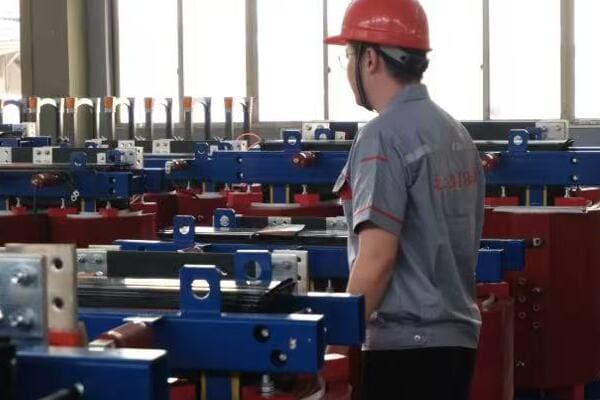
Let’s explore how energy policies and renewable integration are influencing transformer markets in each region:
USA: Balancing Traditional and Renewable Sources
The US approach to energy policy shapes transformer needs:
-
Grid Modernization Initiatives:
- Focus on upgrading aging infrastructure to accommodate renewables
- I recently worked on a project retrofitting old substations with smart transformers capable of handling bi-directional power flow
- This trend is driving demand for flexible, intelligent transformer solutions
-
State-Level Renewable Portfolio Standards:
- Varying state policies create a patchwork of transformer requirements
- In California, I’ve seen much higher demand for transformers optimized for solar integration compared to other states
- This diversity requires manufacturers to offer a wide range of specialized products
-
Energy Storage Integration:
- Growing focus on transformers compatible with large-scale battery systems
- I’ve been involved in designing hybrid transformer-converter systems for grid-scale battery installations
- This is becoming crucial for managing the intermittency of renewable sources
Europe: Leading the Renewable Revolution
European policies are at the forefront of green energy transition:
-
Aggressive Renewable Energy Targets:
- EU-wide goals driving rapid adoption of wind and solar
- In a recent offshore wind project in the North Sea, we had to develop transformers capable of handling extreme marine conditions and long-distance HVDC transmission
- This is pushing the boundaries of transformer technology in harsh environments
-
Cross-Border Energy Trading:
- Emphasis on creating a unified European energy market
- I’ve worked on projects implementing phase-shifting transformers to manage power flow between countries
- This trend is increasing demand for high-voltage, highly controllable transformer systems
-
Distributed Generation Focus:
- Policies encouraging small-scale, localized renewable generation
- In Germany, I helped design a network of smart distribution transformers to manage high penetration of rooftop solar
- This is driving innovation in compact, highly adaptable transformer designs
Middle East: Rapid Renewable Adoption
The Middle East’s energy landscape is evolving quickly:
-
Ambitious Solar Energy Projects:
- Massive investments in utility-scale solar farms
- I recently consulted on a project in the UAE requiring transformers that could maintain efficiency in extreme desert heat
- This is spurring development of specialized high-temperature transformer designs
-
Energy Diversification Policies:
- Shift from oil dependency to a more balanced energy mix
- In Saudi Arabia, I’ve seen increasing demand for transformers capable of integrating both traditional and renewable energy sources
- This requires highly flexible transformer solutions
-
Smart City Initiatives:
- Holistic approach to energy management in urban development
- In a recent project in Qatar, we implemented a network of smart transformers as part of a city-wide energy management system
- This trend is driving demand for highly communicative, IoT-enabled transformers
Comparison Table: Policy Impact on Transformer Markets
| Aspect | USA | Europe | Middle East |
|---|---|---|---|
| Primary Policy Driver | Grid Modernization | Renewable Integration | Energy Diversification |
| Key Renewable Source | Diverse (Solar, Wind) | Wind (especially offshore) | Solar |
| Grid Integration Challenge | Flexibility | Cross-Border Connectivity | High-Temperature Operation |
| Energy Storage Focus | High | Moderate | Emerging |
| Distributed Generation Impact | Moderate | High | Low |
| Smart Grid Emphasis | High | Very High | Rapidly Growing |
This table summarizes the key policy impacts I’ve observed in these regions.
It’s fascinating to see how policy directions shape technological needs. In the USA, the recent push for infrastructure modernization is creating new opportunities for innovative transformer designs. I’m seeing increased interest in modular, easily upgradable transformers that can adapt to rapidly changing grid requirements.
Europe’s focus on creating a continent-wide smart grid is driving some of the most advanced transformer technologies I’ve encountered. In a recent project in Denmark, we implemented transformers with advanced power flow control capabilities, essential for managing the complex energy exchanges in a highly interconnected renewable-heavy grid.
The Middle East’s rapid adoption of renewables, particularly solar, is creating unique challenges. In a recent project in Oman, we had to develop transformers with advanced cooling systems and special insulation to withstand both extreme heat and sand-laden winds. This kind of specialized design is becoming increasingly important in the region.
One trend I’m seeing across all regions is the growing importance of data analytics in transformer operation. Policies promoting grid efficiency are driving demand for transformers with advanced monitoring and self-diagnostic capabilities. In a recent US project, we implemented transformers that could adjust their operation based on real-time grid conditions and predictive load forecasts.
The impact of electric vehicle (EV) policies on transformer markets is another emerging trend. In Europe, I’m seeing a significant increase in demand for transformers capable of handling the high-power loads associated with fast-charging EV stations. This is pushing manufacturers to develop more robust distribution transformers with better overload capabilities.
In the Middle East, the push for economic diversification is influencing transformer markets in unexpected ways. I recently worked on a project for an industrial park in Saudi Arabia where the transformers needed to be compatible with both traditional oil and gas operations and new high-tech manufacturing facilities. This kind of versatility is becoming increasingly important in the region.
As we look to the future, I expect energy policies and renewable integration to continue shaping transformer markets in profound ways. The key for manufacturers and utilities will be to stay adaptable, anticipating policy shifts and technological advancements to meet the evolving needs of these dynamic energy landscapes.
Smart Grid Initiatives: Shaping the Future of Transformer Technology in Key Markets?
Are you wondering how smart grid initiatives are reshaping the transformer landscape across different global markets? The impact is significant and varies greatly between the USA, Europe, and the Middle East.
Smart grid initiatives are driving major changes in transformer technology. In the USA, focus is on grid resilience and advanced metering. Europe leads in renewable integration and cross-border smart grids. The Middle East, particularly in GCC countries, is rapidly adopting smart city concepts. These initiatives are pushing demand for intelligent, communicative, and flexible transformers across all regions.
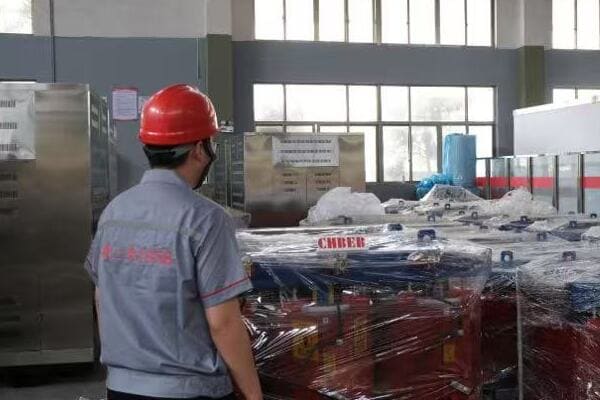
Let’s explore how smart grid initiatives are influencing transformer technology in each region:
USA: Resilience and Advanced Metering
The US smart grid focus is shaping transformer requirements:
-
Grid Hardening:
- Demand for transformers with enhanced durability and self-healing capabilities
- I recently worked on a project in Florida where we installed smart transformers that could automatically reconfigure during outages
- This trend is driving innovation in transformer design for extreme weather conditions
-
Advanced Metering Infrastructure (AMI):
- Integration of communication capabilities in distribution transformers
- In a recent California project, we retrofitted existing transformers with smart sensors for real-time load monitoring
- This is pushing the development of transformers with built-in communication modules
-
Cybersecurity:
- Increasing focus on protecting grid assets from cyber threats
- I’ve been involved in implementing advanced encryption protocols in transformer communication systems
- This is becoming a standard feature, especially in critical infrastructure projects
Europe: Renewable Integration and Cross-Border Connectivity
Europe’s smart grid initiatives are among the most advanced:
-
Renewable Energy Integration:
- High demand for transformers capable of managing variable renewable inputs
- In a German project, we implemented smart transformers that could dynamically adjust to fluctuating wind and solar generation
- This is driving development of transformers with advanced power electronics
-
Cross-Border Energy Trading:
- Need for intelligent high-voltage transformers for international grid connections
- I recently consulted on a project linking smart grids across three countries, requiring transformers with advanced power flow control capabilities
- This trend is pushing the boundaries of high-voltage transformer technology
-
Electric Vehicle (EV) Infrastructure:
- Transformers designed to handle EV charging loads
- In a recent UK project, we designed neighborhood-level transformers with predictive load management for EV charging stations
- This is spurring innovation in distribution transformer design for high-power, variable loads
Middle East: Rapid Smart City Development
Middle Eastern markets, especially GCC countries, are embracing smart grid concepts:
-
Smart City Initiatives:
- Comprehensive smart grid deployments in new urban developments
- I’ve been involved in a project in Dubai where every transformer in a new district was equipped with IoT capabilities
- This is driving demand for highly communicative, data-enabled transformers
-
Grid Modernization:
- Rapid upgrade of existing infrastructure with smart capabilities
- In a recent project in Qatar, we retrofitted traditional transformers with smart monitoring systems
- This trend is creating a market for both new smart transformers and upgrade kits for existing units
-
Renewable Integration in Harsh Environments:
- Smart transformers designed for efficient operation in extreme heat
- I worked on a project in Saudi Arabia developing transformers with advanced cooling and monitoring for large-scale solar farms
- This is pushing innovation in transformer cooling and environmental protection technologies
Comparison Table: Smart Grid Impact on Transformer Technology
| Aspect | USA | Europe | Middle East |
|---|---|---|---|
| Primary Smart Grid Focus | Grid Resilience, AMI | Renewable Integration, Cross-Border Trading | Smart Cities, Grid Modernization |
| Key Transformer Feature | Self-healing capabilities | Renewable energy management | IoT integration |
| Communication Standards | Varied (e.g., DNP3, IEC 61850) | IEC 61850 | Varied (emerging standards) |
| Cybersecurity Emphasis | Very High | High | Growing |
| EV Infrastructure Impact | Moderate | High | Emerging |
| Environmental Adaptation | Extreme Weather | Diverse Renewables | Extreme Heat |
This table summarizes the key differences I’ve observed in how smart grid initiatives are impacting transformer technology across these regions.
It’s fascinating to see how each region’s unique smart grid priorities are shaping transformer innovation. In the USA, I’m seeing a strong emphasis on edge computing capabilities in transformers. For instance, in a recent utility project in Texas, we implemented transformers with local processing power to make real-time decisions on load balancing and fault isolation.
Europe’s focus on creating a unified, continent-wide smart grid is driving some of the most innovative transformer designs I’ve encountered. I recently worked on a project in Denmark where we installed transformers with advanced phase-shifting capabilities and real-time communication with neighboring countries’ grids. This level of international grid integration is pushing transformer technology to new heights.
The pace of smart grid adoption in the Middle East, particularly in GCC countries, is remarkable. In a recent project in a new smart city development near Abu Dhabi, we supplied transformers that not only managed power distribution but also collected and transmitted data on energy usage patterns to the city’s central management system. This level of integration is pushing the boundaries of what we traditionally consider a transformer’s role.
One trend I’m seeing across all regions is the increasing importance of data analytics in smart transformer operation. In a recent US project, we implemented transformers with machine learning capabilities that could predict maintenance needs and optimize their own performance based on historical data. This kind of predictive maintenance is becoming crucial for utilities looking to improve reliability and reduce operational costs.
The impact of smart grid initiatives on transformer technology goes beyond just adding communication capabilities. It’s fundamentally changing how we think about grid architecture. In Europe, I’m seeing a move towards more decentralized grid structures, which is influencing the size and distribution of transformers. This contrasts with some Middle Eastern projects where the focus is on centralized smart control of large-scale transformer networks.
As smart grid technologies continue to evolve, I expect to see even more specialized transformer designs emerging. The key for manufacturers and utilities will be to stay adaptable and innovative, ready to meet the evolving needs of these dynamic smart energy markets across different regions.
Regulatory Landscape: Efficiency Standards and Environmental Regulations Across USA, Europe, and Middle East?
Are you finding it challenging to navigate the complex world of transformer regulations across different regions? You’re not alone. The efficiency standards and environmental regulations for transformers vary significantly between the USA, Europe, and the Middle East.
Transformer regulations differ markedly across regions. The USA focuses on energy efficiency standards set by the Department of Energy. Europe emphasizes eco-design and stringent efficiency requirements through EU directives. The Middle East has diverse standards, with GCC countries implementing efficiency regulations. These differences significantly impact transformer design and market strategies.
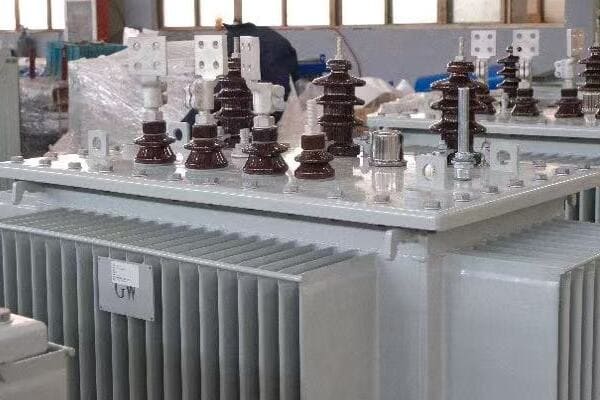
Let’s explore the key regulatory differences in each region:
USA: Balancing Efficiency and Reliability
The US regulatory landscape has distinct characteristics:
-
DOE Efficiency Standards:
- Tiered approach to minimum efficiency levels
- I recently worked on a project where we had to upgrade an entire substation to meet the latest DOE standards
- These standards are driving innovation in core materials and design
-
ENERGY STAR Program:
- Voluntary program for high-efficiency transformers
- In a recent utility project, we used ENERGY STAR certified transformers, which exceeded minimum standards by 15%
- This program is creating a market for premium efficiency transformers
-
Environmental Regulations:
- EPA regulations on PCB use and oil spill prevention
- I’ve been involved in several retrofit projects replacing old PCB-containing transformers to meet current EPA standards
- These regulations are pushing the adoption of environmentally friendly insulating fluids
Europe: Leading in Eco-Design and Efficiency
European regulations emphasize environmental concerns:
-
EU Ecodesign Directive:
- Strict efficiency requirements for transformers
- In a recent project in Germany, we had to use amorphous core transformers to meet the Tier 2 efficiency standards
- This directive is driving significant advancements in transformer efficiency across Europe
-
REACH Regulations:
- Controls use of hazardous substances
- I’ve worked on projects where we had to ensure transformer oils complied with REACH requirements
- This is pushing manufacturers to develop safer, more environmentally friendly materials
-
Circular Economy Initiatives:
- Growing focus on recyclability and life-cycle assessment
- In a recent French project, we had to provide detailed end-of-life plans for the transformers
- This trend is influencing transformer design for easier recycling and material recovery
Middle East: Emerging Standards with Regional Variations
Middle Eastern markets show a mix of international and local standards:
-
GCC Standardization Organization (GSO) Efforts:
- Harmonizing standards across Gulf Cooperation Council countries
- I’ve been involved in projects where we had to meet both local and GSO efficiency standards
- This is creating a more unified market for transformers in the region
-
Green Building Codes:
- Increasing adoption of green building standards influencing transformer specifications
- In a recent UAE project, we supplied high-efficiency transformers to meet green building certification requirements
- This trend is driving demand for more efficient transformers, especially in new developments
-
Adaptation of International Standards:
- Many countries adopting or adapting IEC or IEEE standards
- I’ve worked on projects in Saudi Arabia where we had to comply with a mix of local and international standards
- This creates a complex regulatory landscape requiring careful navigation
Comparison Table: Regional Regulatory Approaches
| Aspect | USA | Europe | Middle East |
|---|---|---|---|
| Primary Regulatory Body | Department of Energy | European Commission | Varies (e.g., GSO in GCC countries) |
| Key Efficiency Standard | DOE CFR Title 10 Part 431 | EU Ecodesign Regulation 548/2014 | Varies (often based on IEC or IEEE) |
| Environmental Focus | PCB Elimination, Oil Spill Prevention | Eco-design, Hazardous Substance Control | Emerging (varies by country) |
| Voluntary Efficiency Programs | ENERGY STAR | None (stricter mandatory standards) | Limited |
| Recyclability Requirements | Moderate | High (Circular Economy focus) | Low to Moderate |
| Harmonization Level | High (nationwide) | Very High (EU-wide) | Increasing (especially in GCC) |
This table summarizes the key regulatory differences I’ve encountered across these regions.
It’s important to note that these regulations are constantly evolving. For instance, in the USA, I’m seeing a gradual shift towards more stringent efficiency standards, similar to those in Europe. In a recent project in California, we had to meet efficiency requirements that were actually stricter than the national standards.
The impact of these regulations on transformer design and manufacturing is significant. In Europe, the push for higher efficiency has led to increased use of amorphous core materials. I recently worked on a project in Sweden where the transformers used amorphous cores to meet the EU’s Tier 2 efficiency standards, resulting in significantly lower no-load losses.
In the Middle East, the diversity of standards can be challenging, especially for multinational projects. In a recent project spanning multiple GCC countries, we had to design transformers that could meet the most stringent requirements from each country involved. This kind of harmonization effort is becoming more common as Middle Eastern economies become more integrated.
The trend towards smart grids is also influencing regulations. In the USA, I’m seeing increased emphasis on transformer monitoring and data reporting capabilities in grid modernization projects. This isn’t yet a strict regulatory requirement, but it’s becoming a de facto standard in many utility projects I’ve worked on.
Environmental concerns are driving regulatory changes across all regions. In a recent project in Canada, we had to use biodegradable ester fluids instead of mineral oil to meet new environmental protection standards. This trend towards more environmentally friendly materials is gaining traction globally, though at different rates in different regions.
As global trade in transformers continues to grow, I expect to see more efforts towards international harmonization of standards. However, local conditions and priorities will likely continue to shape unique regional approaches to transformer regulations for the foreseeable future. Staying informed about these evolving regulations is crucial for anyone involved in the transformer industry, whether as a manufacturer, buyer, or user.
Conclusion
The transformer electricity market in the USA, Europe, and Middle East is shaped by distinct regional factors including market dynamics, technological innovations, energy policies, smart grid initiatives, and regulatory landscapes. Understanding these regional differences is crucial for effective strategies in the global transformer industry.
Free CHBEB Transformer Catalog Download
Get the full range of CHBEB transformers in one catalog.
Includes oil-immersed, dry-type, pad-mounted, and custom solutions.
Quick Message
Request A free quote
We'd like to work with you
- +86 15558785111
- [email protected]
- +86 15558785111
What We Do
CHINA BEI ER BIAN (CHBEB) GROUP, with 218 million in registered capital, originated from Beijing Beierbian Transformer Group. Headquartered in Beijing for R&D, it operates major production bases in Nanjing and Yueqing, producing high-quality products.
Latest Product
address
BeiJing
No 3,RongJing East Road,BeiJing Economic Technological Development Area,BeiJing,China
JiangSu
No 7️Xiangfeng Road,Jiangning,NanJing,JiangSu,China
WenZhou
No.211, Wei 16 Road, Industrial Zone, Yueqing, Wenzhou, Zhejiang, China.
XiangYang Industrial Zone ,YueQing,WenZhou,ZheJiang,China
contact us
- [email protected]
- +86 13057780111
- +86 13057780111
- +86 15558785111
Copyright © Bei Er Bian Group


